Shagreen
Cabinetmakers and casing specialists have been using fish skin
for quite a long time. IN Europe, the first proofs of use can
be traced to the XVth and XVIth centuries. Bellon, ca. 1550, writes
that they were used to case boxes and to cover swords and daggers
handles. In the same way, Albrecht Dürer, the famous German
engraver, during one of his trips to Netherlands between 1520
and 1521, writes down in his account books the purchase of various
objects covered with fish skins from the "Indies".
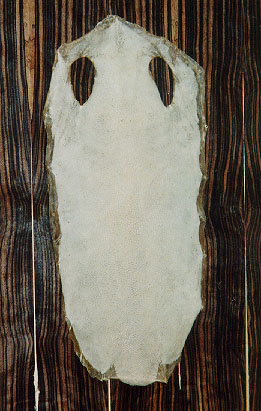
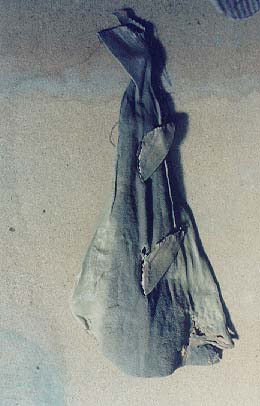 Left,
Dasyatis Sephen skin
Left,
Dasyatis Sephen skin
Right, "sea angel" skin used as an abrasive
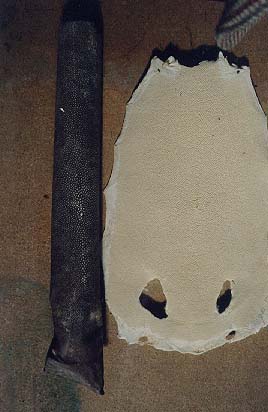 Two
D. Sephen skins
Two
D. Sephen skins
A. The white skin results from a modern preparation, specifically
designed for cabinetmaking.
It is ready to use, flat and stabilized.
B. The grey skin results from an ancient traditional preparation
and is more difficult to use.
Being rolled, it tends to retract when glued.
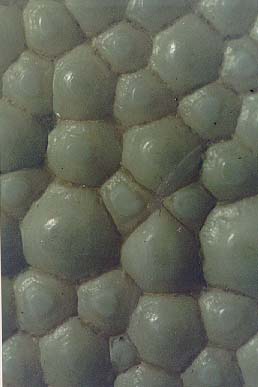
x5
magnification of spicules
The Japanese were the first users of the type of shagreen frequently
seen on Art Deco furniture. They used it for sword handles (katana)
and armour covering, because of it shardness. The spicules have
the same structure as human teeth. They also used it to cover
small boxes.
The Art Deco shagreen comes from the skin of Dasyatis Sephen.
We provide skins for cabinet making and bookbinding. Our skins
are specifically prepared for their future use. They are semi-tanned,
thus more stable than traditional ancient preparations.
 Back
Back

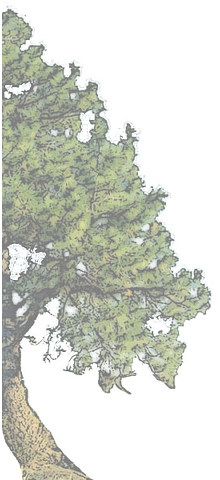
![]() e-mail:
j.george@libertysurf.fr
e-mail:
j.george@libertysurf.fr 